Sometimes an "audible" works better...
When I got the
car I was relieved that it didn't "chirp" or blare the horn
every time I locked or unlocked the doors. Let's face it,
there are times when we don't want our comings and goings
announced in such a tactless manner. Still, I found that
in the daytime, when walking away from the car, or after
forgetting until I'm some distance away, I could not tell if the
car was locking or unlocking.
I found on the
crossfireforum.org website an idea to install a device that
gives out a gentle tone that can be heard from a short distance
and does not announce the locking or unlocking like the opening
of a Broadway musical.
So after
reading the write-up I drew a schematic with some modifications
of my own.
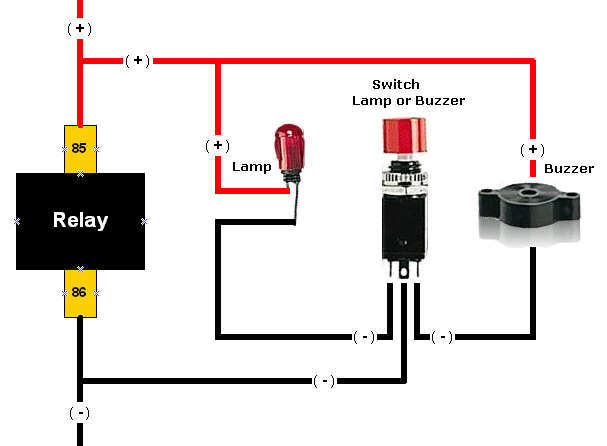
The design
takes power and ground from the relay that flashes the parking
lights when the car is locked (3 flashes) or unlocked (one
flash)
The circuit I
designed has a single-pole, double throw push-button switch.
In one position, the buzzer in the circuit quietly beeps.
In the other position, the lamp in the circuit flashes.
The reason for the lamp is to provide a diagnostic function to
aid in troubleshooting if problems develop. I mainly put
the switch in to provide an easy way to disable the beeping
sound if for some reason I didn't want it to operate.
I
put together a control box that contains the buzzer, a lamp and
a switch using the following parts.
I removed the
relay and wrapped the wires around the 85 terminal (positive)
and 86 terminal (negative). After shaping the wires, I
removed them and put some solder on them to help them keep their
shape. Then I replaced the wires on their respective
terminals, and reinstalled the relay in its socket.

Here is a view
of the wiring coming from the relay in the upper right corner of
the picture. Black is ground and white is positive.
Note the thicker red wire coming off the fuse bank. This
is the switched positive lead that goes to the
auxiliary fuse
box I assembled and installed in support of my
stereo install.
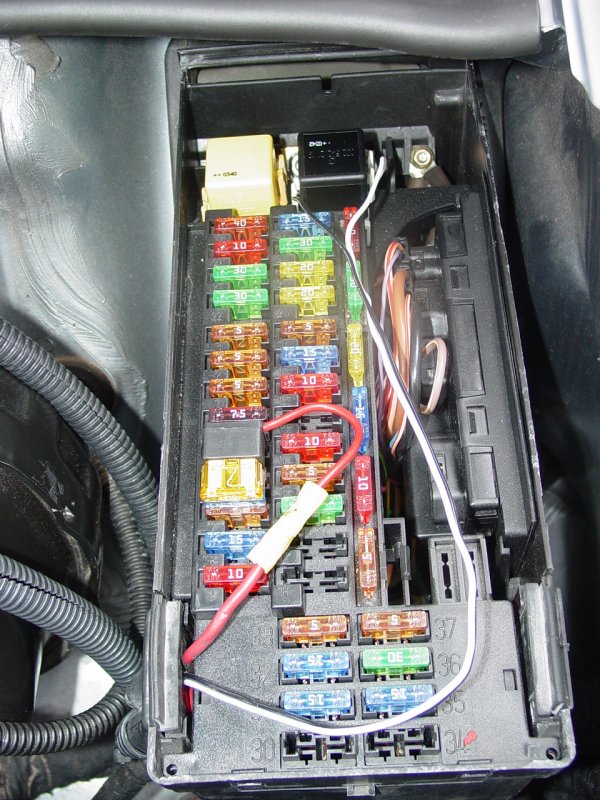
I took this
opportunity to route the red stereo wire and the leads for the
buzzer through a rubber port provided for this purpose.
The wires go into some plastic conduit that I installed to help
keep the wires protected and dressed.
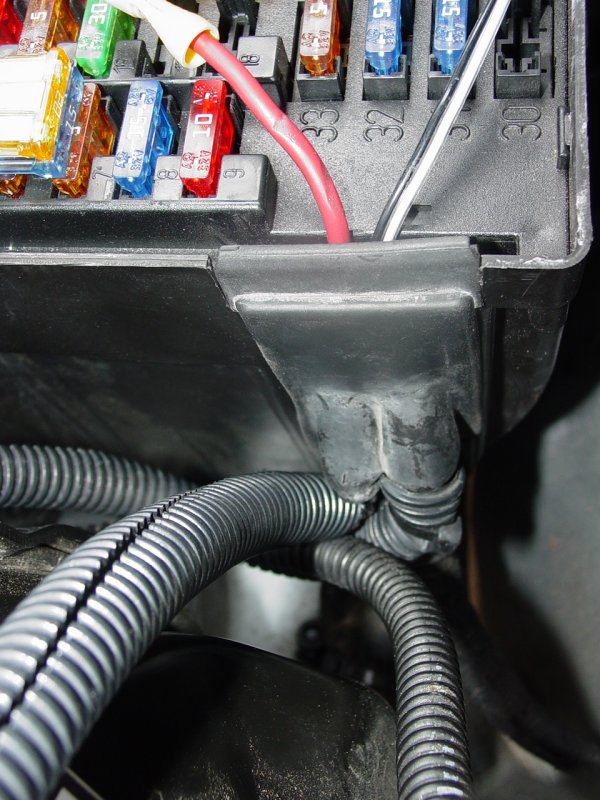
Here's another
shot of the port with a white wire coming out of it. The
port slides out of the fuse case and can be easily handled to
cut the holes and feed the wires through. Then the rubber
port can be reinstalled onto the fuse case. Take care to
get the rubber parts properly slotted on both sides of the case
wall for proper sealing.
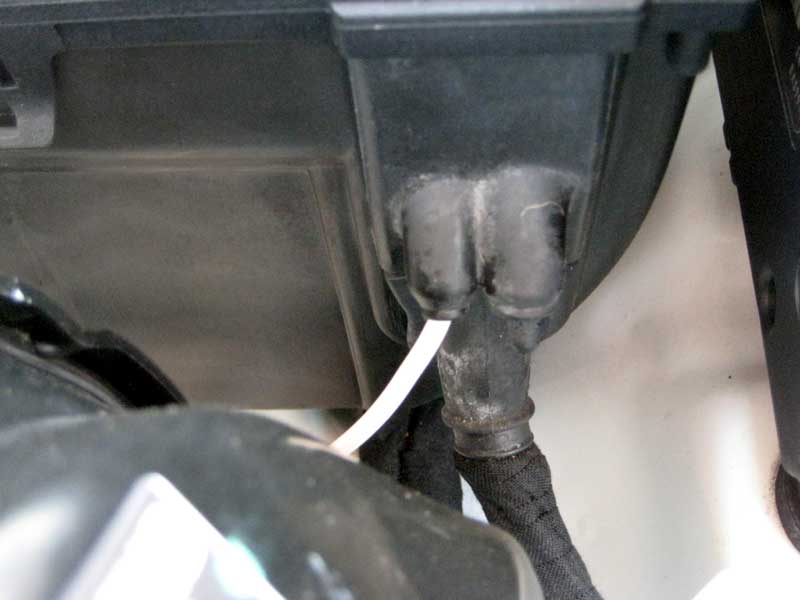
The box containing
the buzzer, switch and lamp is Velcro'd onto the fuse panel cover
and allows me to activate or deactivate the tone alert by
pressing the switch.
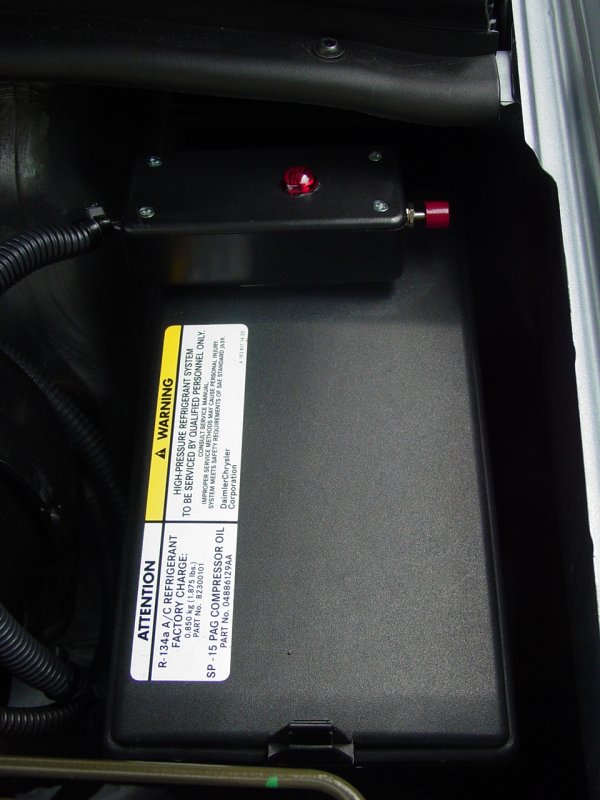



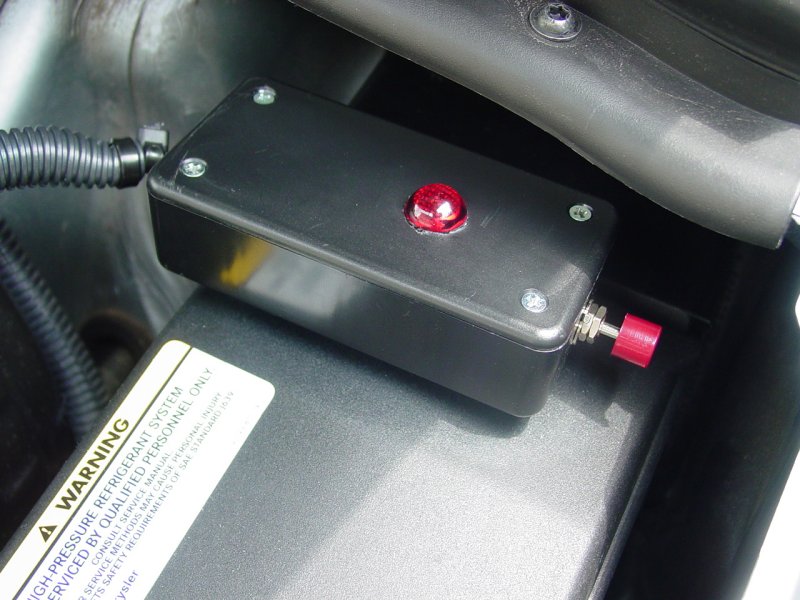
Visitors since
6/28/08